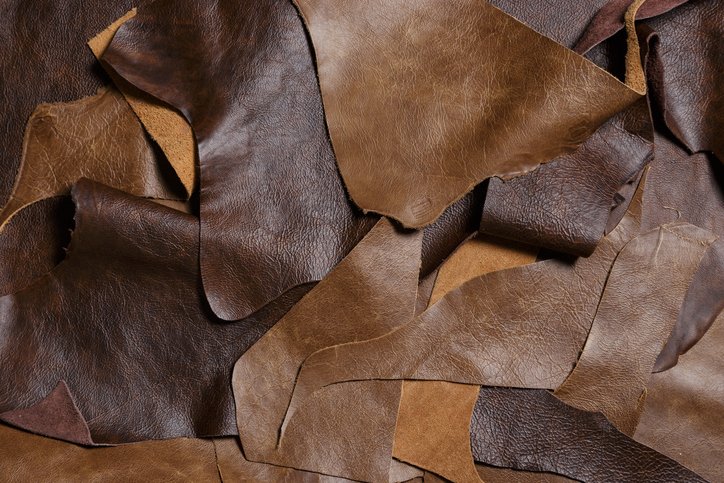Recycled leather is a sustainable alternative that is gaining momentum in the fashion industry. Through innovative processes, discarded leather scraps and remnants are transformed into a new material, reducing waste and environmental impact. By giving a second life to existing leather, this process minimizes the need for new raw materials and energy consumption. What is recycled leather? It’s a forward-thinking solution that marries eco-consciousness with style, creating a circular approach to fashion that resonates with a growing number of consumers. Embark on a journey through the world of recycled leather and discover its transformative potential today.
What is Recycled Leather?
Welcome, young eco-warriors! Today, we are going on an exciting adventure to discover the wonders of recycled leather. Did you know that leather can be recycled, just like paper and plastic? Let’s dive into the fascinating world of recycled leather and learn how it is made, its benefits, and how it helps our planet!
The Basics of Recycled Leather
So, what exactly is recycled leather? Recycled leather is created by processing discarded leather scraps and leftovers from various industries. Instead of ending up in landfills, these scraps are collected, cleaned, and processed to create new, sustainable leather products. This eco-friendly process not only helps reduce waste but also gives a second life to materials that would otherwise be thrown away.
How is Recycled Leather Made?
Creating recycled leather involves several steps that transform old leather scraps into a new, usable material. First, the collected scraps are sorted based on color and quality. Then, they undergo a thorough cleaning process to remove any dirt or impurities. Next, the scraps are shredded into tiny pieces and mixed with natural binders to form a cohesive material. This material is then pressed and treated to create sheets of recycled leather that can be used for making various products.
Benefits of Recycled Leather
Recycled leather offers a range of benefits, both for the environment and consumers. One of the key advantages is its sustainability. By repurposing discarded leather, we are reducing the demand for new leather production, which helps conserve resources and minimize environmental impact. Additionally, recycled leather is often more affordable than traditional leather, making it an accessible and budget-friendly option for eco-conscious shoppers.
Environmental Impact
Leather production can have significant environmental implications, such as deforestation, water pollution, and greenhouse gas emissions. By choosing recycled leather products, we can reduce the environmental footprint associated with traditional leather production and contribute to a healthier planet for future generations.
Durability and Quality
Despite being made from recycled materials, recycled leather is durable and of high quality. It retains the unique texture and appearance of traditional leather while offering the added benefit of being more sustainable. Products made from recycled leather are designed to withstand daily use and last for years, making them a smart and eco-friendly choice for consumers.
How Recycled Leather Helps the Planet
Every time we choose a recycled leather product, we are taking a small but impactful step towards a greener future. By supporting the use of recycled materials, we are reducing waste, conserving natural resources, and promoting sustainable practices. Recycling leather not only minimizes the environmental impact of leather production but also raises awareness about the importance of recycling and upcycling in our daily lives.
Examples of Recycled Leather Products
Recycled leather can be used to create a wide range of products, from fashion accessories to home decor items. Here are some popular items made from recycled leather:
- Wallets
- Belts
- Handbags
- Shoes
- Notebooks
- Coasters
- Keychains
These products showcase the versatility and sustainability of recycled leather, offering stylish and eco-friendly options for everyday use.
As we wrap up our exploration of recycled leather, remember that every small choice we make can have a big impact on the planet. By choosing recycled leather products, we are not only supporting sustainable practices but also sending a powerful message about the importance of environmental conservation. So, next time you’re shopping for a new accessory or gift, consider opting for recycled leather and be part of the movement towards a greener, cleaner Earth!
Thanks for joining me on this eco-friendly journey. Together, we can make a difference, one recycled leather product at a time!
WHAT IS RECYCLED LEATHER? IS IT SUSTAINABLE? DOES IT MEET GRS? DESIGNERS SHOULD ALL KNOW ABOUT THIS.
Frequently Asked Questions
What is recycled leather?
Recycled leather is a sustainable material made by collecting leather scraps, remnants, or old leather products and processing them to create new products. These discarded leather items are broken down into fibers or shredded pieces and then combined with binding agents to form a new fabric that resembles genuine leather.
How is recycled leather made?
Recycled leather is made through a process that involves collecting discarded leather items such as furniture, clothing, or scraps from manufacturing. These materials are cleaned, broken down into small pieces, and then mixed with bonding agents to create a new material. The resulting mixture is often pressed into sheets, dyed, and treated to achieve the desired texture and appearance.
What are the benefits of using recycled leather?
Using recycled leather provides several benefits, including environmental sustainability by reducing waste from leather production and the fashion industry. It also helps in conserving natural resources and reducing the carbon footprint associated with traditional leather production. Additionally, recycled leather can be more affordable than genuine leather while still offering a similar look and feel.
Final Thoughts
Recycled leather is a sustainable material made from discarded leather scraps, fibers, or pieces that are processed and repurposed into new products. By diverting waste from landfills and reducing the need for new leather production, recycled leather helps lower the environmental impact of traditional leather manufacturing. The eco-friendly process of recycling leather involves shredding, mixing with natural or synthetic fibers, and bonding with natural rubber or binding agents. What is recycled leather? It is an innovative solution that promotes circular economy principles and reduces the carbon footprint of the fashion industry.




